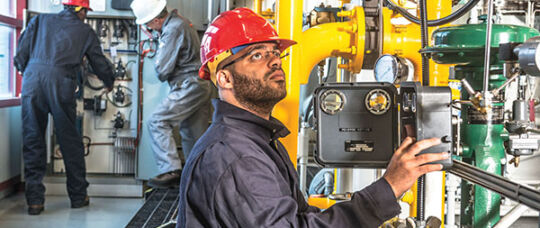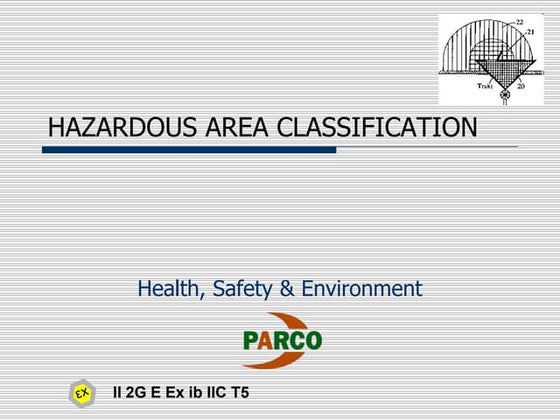8 Simple Techniques For Roar Solutions
8 Simple Techniques For Roar Solutions
Blog Article
The 25-Second Trick For Roar Solutions
Table of ContentsExcitement About Roar SolutionsThe Best Guide To Roar SolutionsFacts About Roar Solutions Uncovered
In order to secure setups from a potential surge a technique of analysing and categorizing a potentially hazardous location is needed. The purpose of this is to ensure the proper choice and setup of tools to eventually prevent a surge and to guarantee safety and security of life.
(https://padlet.com/thomascarrillo4740/roar-training-solutions-jrrziydpbb7m3xsa)
No tools should be set up where the surface area temperature level of the tools is above the ignition temperature of the provided danger. Below are some typical dust hazardous and their minimum ignition temperature level. Coal Dust 380C 225C Polythene 420C (melts) Methyl Cellulose 420C 320C Starch 460C 435C Flour 490C 340C Sugar 490C 460C Grain Dust 510C 300C Phenolic Material 530C > 450C Aluminium 590C > 450C PVC 700C > 450C Residue 810C 570C The probability of the threat being existing in a focus high adequate to create an ignition will certainly differ from area to area.
In order to classify this threat an installment is separated right into locations of threat relying on the quantity of time the harmful exists. These areas are referred to as Areas. For gases and vapours and dirts and fibers there are three zones. Zone 0 Zone 20 A harmful environment is extremely likely to be existing and might be present for extended periods of time (> 1000 hours each year) and even constantly Area 1 Zone 21 An unsafe atmosphere is feasible but unlikely to be present for extended periods of time (> 10 450 C [842 F] A category of T6 suggests the minimum ignition temperature level is > 85 C [185 F] Harmful area electrical equipment maybe made for usage in greater ambient temperature levels. This would suggested on the rating plate e.g. EExe II C T3 Ta + 60C( This means at 60C ambient T3 will not be surpassed) T1 T1, T2, T3, T4, T5, T6 T2 T2, T3, T4, T5, T6 T3 T3, T4, T5, T6 T4 T4, T5, T6 T5 T5, T6 T6 T6 A T Course rating of T1 indicates the maximum surface area temperature level generated by the tool at 40 C is 450 C. Presuming the associated T Class and Temperature level score for the equipment are appropriate for the location, you can always use a tool with an extra rigid Division ranking than required for the area. There isn't a clear solution to this inquiry. It really does depend on the type of tools and what fixings require to be accomplished. Tools with specific test treatments that can not be carried out in the field in order to achieve/maintain 3rd event rating. Must come back to the factory if it is prior to the devices's service. Field Repair Work By Authorised Personnel: Challenging screening may not be needed nevertheless specific procedures might need to be followed in order for the devices to maintain its 3rd party rating. Authorised employees must be used to execute the work correctly Fixing must be a like for like replacement. New component should be thought about as a straight replacement requiring no special testing of the equipment after the repair service is full. Each tool with a harmful score should be reviewed separately. These are described at a high degree listed below, however, for even more detailed details, please refer directly to the standards.
Getting My Roar Solutions To Work
The equipment register is a comprehensive database of equipment documents that includes a minimum set of fields to recognize each thing's area, technological specifications, Ex-spouse classification, age, and environmental information. The ratio of Comprehensive to Shut evaluations will be identified by the Equipment Threat, which is examined based on ignition danger (the likelihood of a source of ignition versus the possibility of a combustible ambience )and the unsafe location classification
( Zone 0Area 1, or 2). Carrying out a durable Risk-Based Evaluation( RBI )strategy is important for making sure compliance and safety in managing Electric Devices in Hazardous Locations( EEHA).
Some Of Roar Solutions

In regards to explosive threat, a dangerous area is an environment in which an explosive ambience is present (or may be expected to be existing) in quantities that require special precautions for the building, installment and link usage of devices. Roar Training Solutions. In this post we check out the obstacles faced in the work environment, the danger control procedures, and the required proficiencies to function safely
These materials can, in particular conditions, form eruptive atmospheres and these can have major and unfortunate consequences. Most of us are acquainted with the fire triangle remove any one of the three elements and the fire can not occur, however what does this mean in the context of dangerous locations?
In many instances, we can do little concerning the degrees of oxygen airborne, but we can have substantial influence on resources of ignition, for example electric equipment. Hazardous areas are recorded on the dangerous area classification illustration and are determined on-site by the triangular "EX LOVER" indicator. Right here, among other key details, zones are split right into 3 types depending on the threat, the probability and duration that an explosive ambience will exist; Zone 0 or 20 is deemed one of the most harmful and Zone 2 or 22 is considered the least.
Report this page